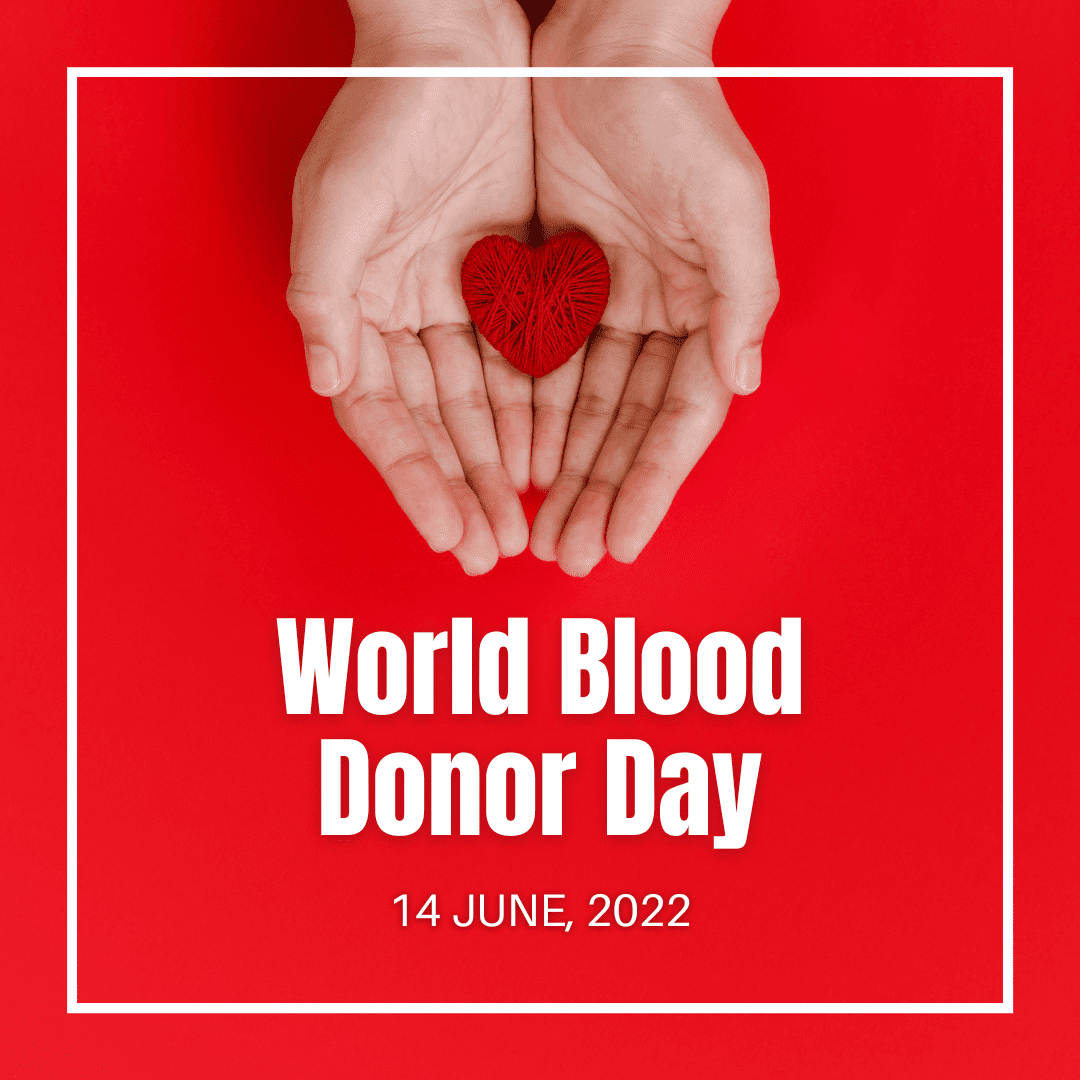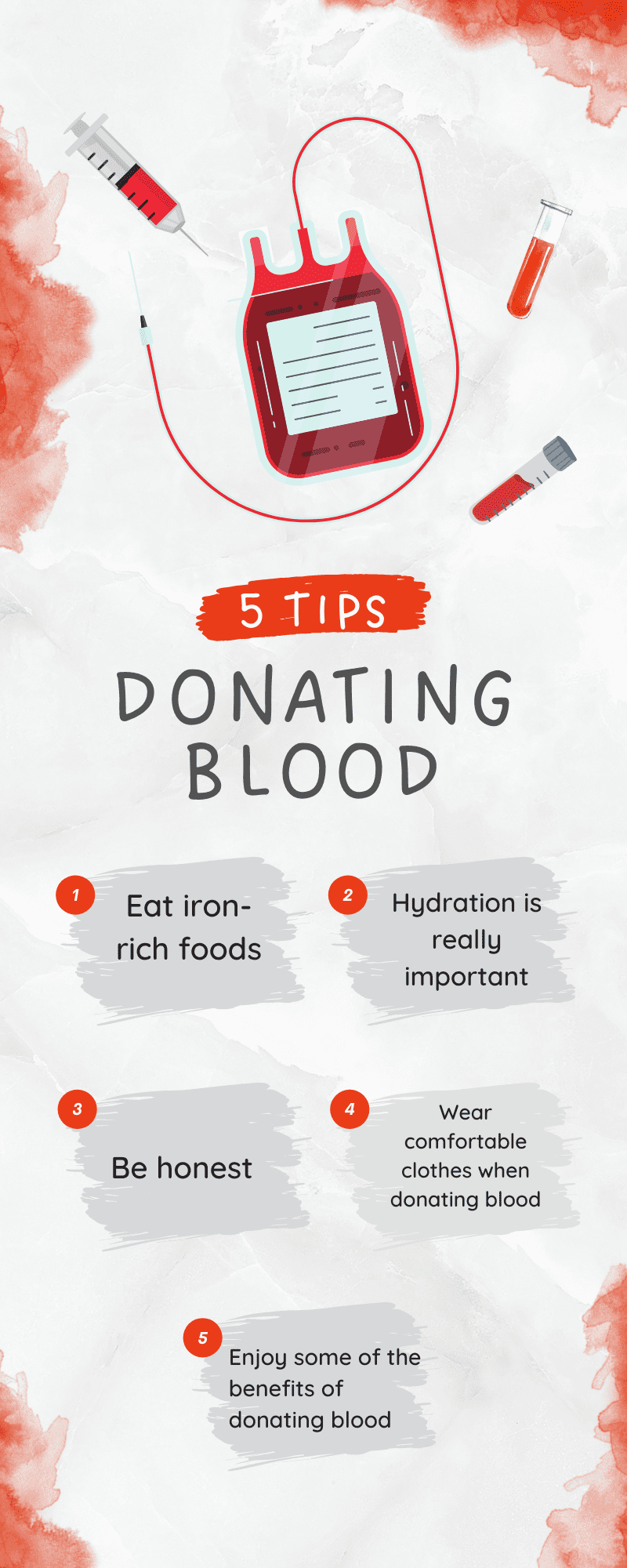Innovative Trials are passionate about ensuring our diverse population is adequately represented within medical research. Whether it is wanting to see more people from underrepresented communities choosing science as a career and pushing for greater patient diversity in clinical trials or focusing on what we are doing internally to celebrate and promote equality and diversity. So far in 2022, we have explored: Cervical Cancer, World Cancer Day and Eating Disorders.
World Blood Donor Day (WBDD) – Share Life, Give Blood
 Created in 2005, WBDD is now a day marked globally, aiming to thank those who have volunteered their blood and also raise awareness of the importance of such donations. The aim of the event is to generate new donors to help meet the huge demand for blood and blood products. Blood drives aiming at obtaining donations are arranged in schools, workplaces or at key locations and landmarks. (Awareness Days, 2022). The importance of donations in the name of research is also highlighted for those that may be unaware. Key facts that are regularly shared (and updated) on an annual basis include:
Created in 2005, WBDD is now a day marked globally, aiming to thank those who have volunteered their blood and also raise awareness of the importance of such donations. The aim of the event is to generate new donors to help meet the huge demand for blood and blood products. Blood drives aiming at obtaining donations are arranged in schools, workplaces or at key locations and landmarks. (Awareness Days, 2022). The importance of donations in the name of research is also highlighted for those that may be unaware. Key facts that are regularly shared (and updated) on an annual basis include:
- Frequency of need for blood globally = every 3 seconds
- Amount of blood an average adult holds = 10-12 pints
- Time that it takes to donate Whole Blood = 10-15 minutes
- Time that it takes to donate Platelets = 90 minutes
- Shelf life of donated Red Blood Cells = 42 days
- Days required between whole blood donations = 56 days
- Units of blood required for daily care globally = 8,000,000+
(National Today, 2022)
There continues to be an apprehension around donating, so by highlighting the demand and sharing the many stories donors and recipients have, the hope is to ensure that the supply chain is as strong as possible and shortages are avoided.
Blood donations save millions of lives annually around the world, helping treat illnesses, injuries and surgeries. The demand during disasters (natural or otherwise) is extreme and preparedness is essential. Also, due to the rarity of certain blood disorders, opportunities to treat can be rare, making those that can make essential donations all the more valuable (National Today, 2022).
A donation can be used as:
- Whole blood
- Consisting of the whole volume of a donation (55% Plasma, 45% Red Blood Cells, <1% White Blood Cells and Platelets), especially useful for surgeries and traumatic incidents. It can also be used to derive other blood products.
- Red Blood Cells (Erythrocytes)
- Can be used for surgeries, traumatic incidents, anaemia (such as Sickle Cell Anaemia), blood disorders. Isolating these cells for transfusions that do not alter a patient’s blood volume.
- Platelets (Thrombocytes)
- Cell fragments that attach to the lining of blood vessels to stop/prevent blood loss. Can be obtained via centrifugation of whole blood or using an apheresis device, which is the more productive method for gathering platelets. They can be used during surgeries, for those with blood disorders, cancer treatment or organ transplants. Due to their function, platelets have a short shelf life and require constant attention to prevent them from binding together.
- Plasma
- Used to treat traumatic injuries, burns, shock, liver disease or blood clot deficiencies. Contains a number of vital proteins (albumin, gamma globulin, anti-haemophilic factors), as well as minerals, salts, sugars, fats, hormones and vitamins. Plasma helps the maintenance of a healthy blood pressure and volume. In certain cases, there is a need for further separation to isolate the components to make platelet derivatives.
- Cryoprecipitated Antihemophilic Factor (Cryo)
- Platelet derivative rich in clotting factors that is used to treat blood loss through illness or injury. The primary use is for patients with clotting deficiencies (Haemophilia, von Willebrand’s disease).
- White Blood Cells (Leukocytes) & Granulocytes
- Usually, these components are removed from blood and other blood products to prevent possible reactions and/or toxicity from transfusions. Granulocytes are a form of White Blood Cell that target bacteria and viruses and can be used to treat patients that are not able to treat infections with antibiotics. Granulocytes are collected via apheresis and must be used within 24 hours. This very short shelf life means that collections are made when there is a need.
(American Red Cross, 2022)

Tips for a successful blood donation include the following:
- Eat iron-rich foods. Tests before a donation look at iron levels, to ensure that donors are not being put at risk as a result of giving blood. The general advice is that red meats, vitamin c-rich food and leafy greens help with iron levels.
- Hydration is important irrespective of the intention to donate blood. It is important that a pint of water is essentially going to be taken from your body. The advice is to drink an extra 2 cups (500ml) of water before heading to a donation.
- Be honest. Donations rely on the kindness of those who are giving and it is important to recognise when there is a possibility that their safety and that of potential recipients is going to be placed under risk, it is best to avoid going ahead.
- Dress comfortably to allow ease of donation and minimise possible discomfort during the drawing process. The site of exxFtraction needs to be open and easily accessible, free of any hindrance.
- Unexpected benefits of donating blood can include a healthier liver and a reduced risk of a heart attack. On the other hand, dizziness, fatigue and pain/injury at the site of extraction can follow a donation. It is always recommended to minimise physical exertion for the remainder of the day to allow sufficient time for the body to recover from the reduction in blood volume.
(The Daily Checkup, 2021)
There are a number of restrictions required for donors when it comes to giving blood. In the UK, until 2021, any male donor who has had sex with another man would have been automatically ineligible, but this has now changed. Current questions focus more on sexual behaviours of men and women, rather than previous population-based assumptions, with anyone who has had the same partner for the last 3 months being eligible to donate. The primary reason for this requirement is to allow time for any infection to be detected and minimise the risk of transmissions through units of donated blood (Blood – NHS, 2022).
Ella Poppitt, Chief Nurse for Blood Donation at NHS Blood and Transplant, said: “Patient safety is at the heart of everything we do. This change is about switching around how we assess the risk of exposure to a sexual infection, so it is more tailored to the individual…” (Blood – NHS, 2022).
The focus is now on determining the risk of infection, rather than ruling out any specific members of a particular group. These rules are under continuous review and feedback from LGBTQ+ representatives is always factored into considerations (Blood – NHS, 2022).
Under current guidelines, factors that may restrict the ability of a donor to give blood include:
- Lifestyle
- Recent sexual activity
- Illness and Medical conditions
- Recent tattoos or piercings
- Medical procedures performed by unregulated businesses (e.g. acupuncture)
- Recent endoscopy
It is important to understand that these rules are not in place to restrict or make any judgements about donors, but to protect the seriously ill from the possibility of complications that could have serious consequences. These rules apply to the UK, with guidelines in other countries being different (Blood – NHS, 2021).
References
- American Red Cross. (2022). Blood Components. Retrieved 8th June 2022. https://www.redcrossblood.org/donate-blood/how-to-donate/types-of-blood-donations/blood-components.html
- Awareness Days. (2022). World Blood Donor Day 2022. Retrieved 8th June 2022. https://www.awarenessdays.com/awareness-days-calendar/world-blood-donor-day-2022/
- National Today. (2022). World Blood Donor Day – June 14, 2022. Retrieved 8th June 2022. https://nationaltoday.com/world-blood-donor-day/
- The Daily Checkup. (2021). Tips for Donating Blood With Success. Retrieved 8th June 2022. https://blog.amopportunities.org/2021/06/11/tips-for-donating-blood-with-success/
- Blood – NHS. (2021). Landmark change to blood donation eligibility rules on today’s World Blood Donor Day. Retrieved 8th June 2022. https://www.blood.co.uk/news-and-campaigns/news-and-statements/landmark-change-to-blood-donation-eligibility-rules-on-today-s-world-blood-donor-day/
- Blood – NHS. (2022). Men who have sex with men (MSM). Retrieved 8th June 2022. https://www.blood.co.uk/who-can-give-blood/men-who-have-sex-with-men/
- Blood – NHS. (2022). Our improved donation safety check. Retrieved 9th June 2022. https://www.blood.co.uk/news-and-campaigns/the-donor/latest-stories/our-improved-donation-safety-check/
